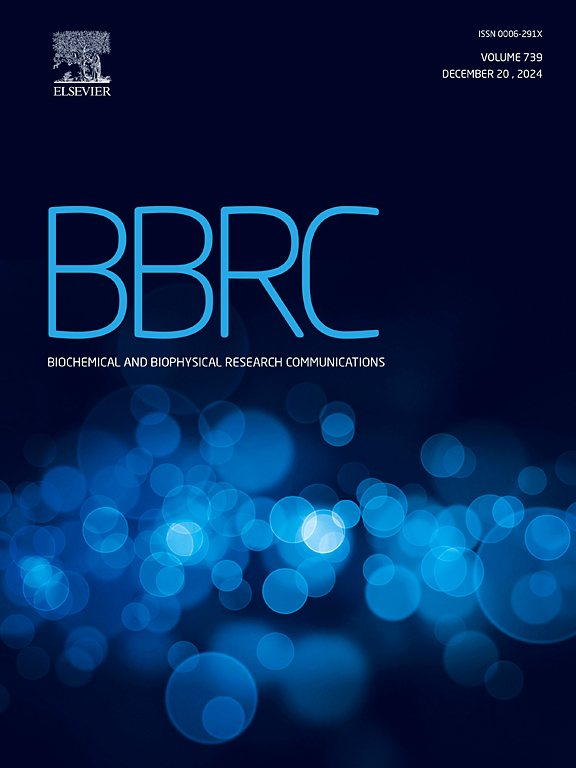In silico maturation of DNA aptamer against the prostate-specific antigen (PSA) and kinetic analysis
IF 2.5
3区 生物学
Q3 BIOCHEMISTRY & MOLECULAR BIOLOGY
Biochemical and biophysical research communications
Pub Date : 2025-03-20
DOI:10.1016/j.bbrc.2025.151638
引用次数: 0
Abstract
The detection of the prostate-specific antigen (PSA) serves as a critical marker for the diagnosis and follow-up of prostate cancer. DNA aptamers targeting PSA have been successfully screened using the systematic evolution of ligands by exponential enrichment (SELEX) technique, complemented by in silico maturation processes. In this study, we aim to optimize a truncated aptamer, denoted as TA87, through computational methods and to analyze potential aptamer candidates in the aptamer-PSA interactions. The PSA antibody, aptamer ΔPSap4#5, and an identified but unpublished aptamer, PSAG221, were evaluated in quartz crystal microbalance (QCM) experiments alongside aptamers derived from TA87. The Tanimoto similarity score and the ZDOCK program, coupled with the ZRANK scoring function, were adopted to assess the secondary structure of single-point mutants of TA87 and their binding interactions with PSA, respectively. Detailed analyses of the aptamer-protein complexes were conducted using molecular dynamics (MD) simulations. Mutations TA87M24 and TA87M49, along with PSAG221 and TA87, showed superior ZDOCK scores compared to ΔPSap4#5. MD simulations further suggested that PSAG221 aptamer might offer enhanced binding to PSA over ΔPSap4#5. The affinity constant (KD) values for the antibody, ΔPSap4#5, PSAG221, TA87, TA87M24, and TA87M49 with PSA were determined through QCM measurements to be 0.35, 0.33, 0.35, 0.56, 0.45, and 0.51 μM−1, respectively. The experimental results showed that the truncated aptamers, TA87, and the two mutations, TA87M24 and TA87M49, did not demonstrate superior PSA binding affinity. Aptamer PSAG221 demonstrated performance comparable to that of the antibody, although slightly inferior to ΔPSap4#5. The aptamer PSAG221 reported in this study could be an alternative probe for developing future PSA aptasensor platforms.
求助全文
约1分钟内获得全文
求助全文
来源期刊
CiteScore
6.10
自引率
0.00%
发文量
1400
审稿时长
14 days
期刊介绍:
Biochemical and Biophysical Research Communications is the premier international journal devoted to the very rapid dissemination of timely and significant experimental results in diverse fields of biological research. The development of the "Breakthroughs and Views" section brings the minireview format to the journal, and issues often contain collections of special interest manuscripts. BBRC is published weekly (52 issues/year).Research Areas now include: Biochemistry; biophysics; cell biology; developmental biology; immunology
; molecular biology; neurobiology; plant biology and proteomics

 求助内容:
求助内容: 应助结果提醒方式:
应助结果提醒方式:


